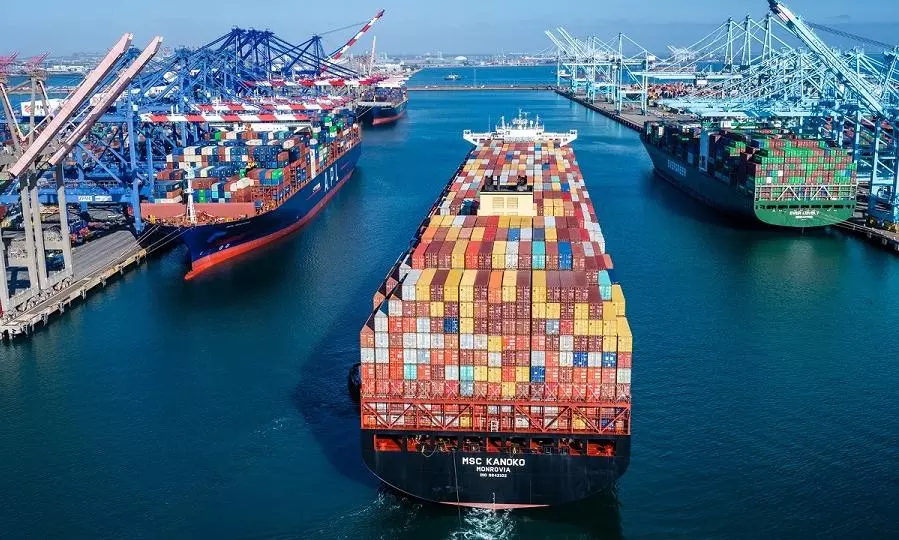Getting ready for the ketchup effect
Clogged bottle Shanghai will drain and vessels carrying pent-up cargo arriving at destinations will become problematic

With the partial re-opening of Shanghai's port, 19 calls were made by container vessels to the ports of Los Angeles and Long Beach from Shanghai, carrying a total capacity of 112,582 TEUs.
"In May 2021, that number was 31 and was composed of container vessels carrying a capacity of 194,678 TEU. This represents a decrease of 39 percent and a drop of over 82,000 in TEUs capacity by vessels in that lane," according to a combined report by Sea-Intelligence and Windward.
There are currently 29 vessels on their way from Shanghai to Los Angeles and Long Beach with a total carrying capacity of slightly more than 225,000 TEUs, the report said.
In the back-haul direction, in May 2022, there were 14 port calls made to the port of Shanghai by container vessels arriving from the ports of Los Angeles and Long Beach with a total capacity of 130,564 TEUs, an increase of over 11 percent. "In May 2021, that number was 17 but those were made by smaller vessels overall carrying a total capacity of 117,395 TEUs."
Reliability challenging
With few exceptions, reliability at the carrier level has deteriorated year-over-year, and there are few signs that this will significantly change soon, the report said.
"When all factors are considered, supply chain planners would do well to anticipate an increase in delays, with only a few actions possible to counter this development.
"It is widely accepted that the partial re-opening of Shanghai's port will have a ketchup effect on the global supply chain. The clogged bottle that is Shanghai will drain and the resulting mess – as vessels carrying pent-up export cargo arrive at their destinations – will become problematic."
Domain experts' innovative technology and consultancy will play important roles in supply chain players' ability to respond to the ketchup effect and accompanying congestion, the report added.
Shanghai congestion back to normal
Congestion at Shanghai port is almost back to normal after two months of lockdown, VesselsValue said in its latest update.
"At the height of reported Omicron cases, average waiting times for tankers, bulkers and container ships at Shanghai stretched to 66 hours in late April. Waiting times have now shortened to 28 hours, just an hour longer than the top end of the range seen at this time of year over the past three years."
Average waiting times for container ships, having peaked at 69 hours in late April, are now down to 31 hours, still some four hours longer than the higher end of the range seen for the time of year over the last three years, the report added.

Jyothi Shankaran
Associate Editor, STAT Media Group. He has worked with IndiaSpend, Bloomberg TV, Business Standard and Indian Express Group. Jyothi can be reached at jyothi@statmediagroup.com


